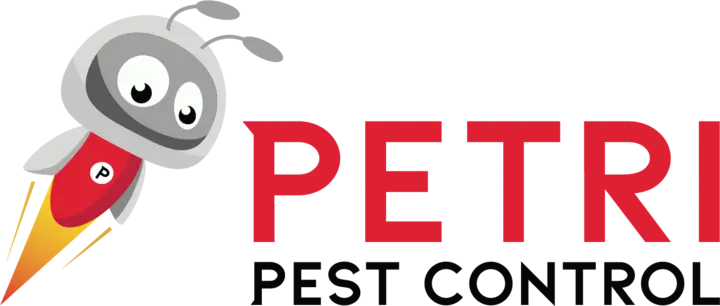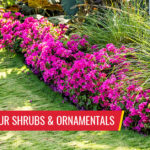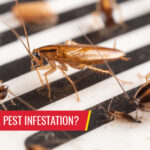
Got termites? Not sure how to tell? South Florida is a hotbed for termite activity. While termites head up the list of the most destructive pests in South Florida, most residents are at a loss to describe these wood-eating menaces or know exactly what to look for as indications of termite activity. Even more challenging, two invasive subterranean species prompted a study in 2016 by the University of Florida and the Institute of Food and Agricultural Sciences that predicted that by 2040, half of the structures in South Florida could be at risk for infestation.
Are There Different Types of Termites?
Yes, several types of termites exist in South Florida and over 40 types exist around the world. Drywood termites are native to South Florida. However, there are two types of invasive termites, the Formosan and Asian subterranean termites, that have caused substantial damage to structures across South Florida.
- Drywood termites – Measure 3/8 to 1-inch long and appear white, off-white, or light brown in color.
- Formosan subterranean termites – Appear light brown with oval-shaped orange-brown heads and cream to whitish body.
- Asian subterranean termites – The top side of the alates’ body is dark brown to black and swarmers are approximately ½ inch in length (including their wings).
More Damage in Less Time
The two invasive species far outweigh the damage that native termite species can inflict, chewing up everything from structural wood to live trees, utility poles, boats, electrical wiring, and even concrete. These species will eat through anything to get to the wood they need to feed the millions of mouths in their vast colonies.
Thought to originate in Southeast Asia, these aggressive termites arrived in South Florida on boats. According to a Sun-Sentinel article, entomology professor, Dr. Nan-Yao Su said, “Formosan termites are expanding their territory every year.” Based in Davie, Dr. Su went on to warn, “Once they get into the area, they have a hold and you can’t get rid of them.”
Where Do Termites Live?
Because termites generally enter structures from ground to wood contact, homeowners may not see them until they have caused cosmetic and structural damage to the home that most homeowner’s insurance policies don’t cover. Often, crawl spaces or lower floors of houses are affected but with Formosan and Asian subterranean termites, anything’s possible.
Drywood Termites can be difficult to detect because they live inside the wood they are infesting. Hollowing out burrows in wooden floors, steps, banisters, walls, doors, eaves, fascia, and even wooden furniture, drywood termites can survive without any water source and do not need contact with soil to survive. Drywood termites’ digestive tracts squeeze water out of the wood they consume. One of the telltales signs of a drywood termite infestation appears as small piles of what looks like sawdust, called “frass.” On closer inspection, the frass is six-sided barrel-shaped pellets excreted by drywood termites and kicked out of exit holes in the wood. Other signs of infestation include:
- Wood that sounds hollow when tapped
- Blistered or buckling surfaces that appear water damaged
- Surfaces that are easy to poke holes through
- Indoor swarms of termite reproductives
- Wings found on window ledges, from reproductives shedding their wings
Drywood termite colonies number around 4,800. These pests can infest wood for a while causing damage to structures. On the other hand, Asian and Formosan subterranean termite colonies average from 60,000 to 1 million termites but can number in the millions.
Formosan and Asian Subterranean Termites build nests in the soil beneath the home because they need moisture to remain active. Connecting to structures by way of hollow “mud tubes,” workers build these tunnels to transport the wood, or cellulose, from your home back to the enormous underground nests near your home. These subterranean termites have been known to form carton nests above ground in heart-rotted out trees and in wall voids of structures. Telltale signs of Formosan or Asian termite infestations can manifest as:
- Hollow mud tubes trailing up structures
- Hollow tubes running up live trees
- Carton nest formations
- Indoor swarming of reproductives
- Wings discarded on window ledges and windowsills after alates or reproductives perform nuptial swarming rituals
How Do You Get Rid of Termites?
In the past five years, Formosan and Asian subterranean termite activity has increased by 30%. These species are the most destructive termites in Florida. Termites need to be addressed by a trusted pest control company, such as Petri Pest Control Services. Contact Petri Pest Control Service’s team of professionals to schedule a free termite inspection. If you suspect you have Formosan or Asian subterranean termites, time is of the essence. At Petri, we offer several treatment approaches, depending on the type of termite and the severity of infestation. Petri’s drywood termite treatment programs include:
- Tent Fumigation
Popular for eliminating drywood termites for years in South Florida, tenting and fumigating the home is recommended to penetrate inside wall voids and deep inside the wood to get rid of drywood termites. Sometimes, homes with more than one infestation need our tent fumigation approach. Tenting can be disruptive because the process involves trimming shrubs and trees back to accommodate the tent in addition to packing up and relocating your family and pets for a few days during the tent fumigation process. - No-Tent Termite Treatment
More recently, no-tent termite treatment is becoming a more popular way to treat drywood termites, as it is a lot less invasive. Petri’s professional technicians utilize the most current technologies, such as the Termatrac device to locate and isolate termite activity. Our no-tent termite treatment locates the sources of termite activity and eliminates the colonies. If all drywood termite colonies can be located and are accessible to direct treatment of the wood then the no-tent method can be effective. - Sentricon® Colony Elimination System
For Formosan and Asian subterranean termite infestations, Petri Pest Control Services relies on the Sentricon® Colony Elimination System. Certified Sentricon specialists, Petri technicians are licensed and trained to install the Sentricon® Colony Elimination System in South Florida. The most effective and reliable method of eliminating entire subterranean termite colonies, the Sentricon System not only eliminates any subterranean termite infestations on your property but also works to prevent new colonies from forming again.
At Petri, we’re proud to offer our full spectrum of termite elimination programs to home and business owners in Broward and Palm Beach counties from our Pompano Beach location. Locally owned and operated since 1956, Petri Pest Control Services, Inc. specializes in indoor and perimeter pest control, lawn spraying, tree and shrub spraying in addition to our termite control services.
Contact us to learn more and schedule a free consultation!
Florida Termites: What You Need To Know in South Florida
Serving Broward County and Palm Beach County


